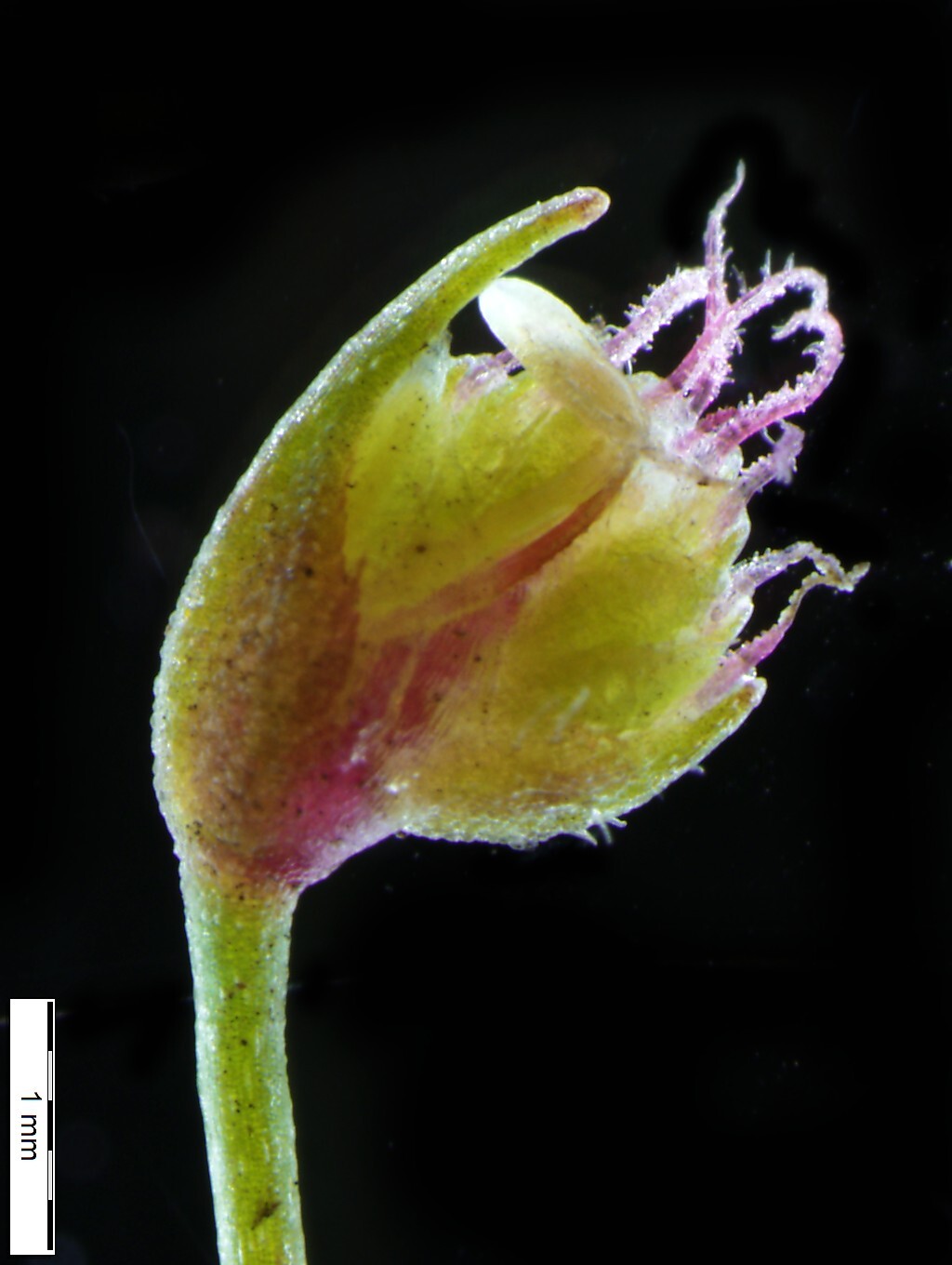Restionaceae
Annual (most Centrolepidoideae) or perennial (usually) herbs with wiry-jointed 'stems', mostly dioecious, occasionally monoecious, rarely bisexual. Rhizomes usually present and tufted or creeping. Branches (aerial 'stems') terete to flattened, branched or unbranched, erect or flexuose, solid or hollow. Leaves with blade usually reduced to dry sheathing bracts; lamina usually reduced to narrow apex or not developed, or sometimes well-developed and linear (in Centrolepidoideae). Inflorescence with partial inflorescences solitary, terminal or axillary, flowers arranged in 1–many-flowered spikelets with subtending floral bracts, or not arranged in definite spikelets; male and female inflorescence similar or dissimilar. Perianth regular, 3–6 and glume-like, or dry and membranous and in 2 whorls. Male flowers with 1 (in Centrolepidoideae) or (2–)3 stamens, opposite the inner perianth parts; filaments free and threadlike, rarely short; anthers 1- or sometimes 2-locular, dorsifixed. Female flowers with 2 or 3 staminodes or staminodes absent; ovary superior, 1–3-locular; styles 1–3; ovule solitary in each loculus. Fruit dry, 2- or 3-angled, loculicidal, or 1-locular and opening along one side, or a small nut.
About 64 genera and c. 545 species, mostly confined to Australia and South Africa, with 176 species in Australia. This family is superficially similar to the Cyperaceae. A useful vegetative feature which distinguishes the Restionaceae from the Cyperaceae, is that the former has unfused 'open' leaf-sheaths whereas the latter has closed fused leaf-sheaths.
The taxonomic limits of Restionaceae have been much disputed. The phylogenetic position of the former Centrolepidaceae (a morphologically distinctive family) with respect to Restionaceae has long been uncertain. Molecular studies have shown that the Centrolepidaceae is nested within Restionaceae, and is now regarded as representing one of the five subfamiies of Restionaceae (Briggs et al. 2014; APG IV 2016; Stevens 2001 onwards).
In many contemporary Floras, the inflorescences are generally considered to be cymose. However, recent detailed analyses of floral and inflorescence structure in several species of Centrolepis have interpreted the inflorescences as fundamentally racemose (Sokoloff et al. 2010). The inflorescences are generally composed of discernable units, these sometimes interpreted as part inflorescences or more recently as single flowers. These units are here referred to as 'inflorescence units'. In Aphelia, each unit is subtended by a primary bract (except in A. gracilis; refer below) and the total inflorescence is arranged in a spike-like cluster which is superficially similiar to the 'spikelets' of some grasses. In A. gracilis the basal primary bract usually has two male flowers (each surrounded by a hyaline secondary bract) and one bisexual unit composed of one male flower and one female flower (both are collectively surrounded by a hyaline secondary bract). In Centrolepis, the inflorescence units are not subtended by a primary bract, except for the two basal units, the whole inflorescence resembling a head-like cluster.
Conn, B.J. (1994). Restionaceae. In: Walsh, N.G.; Entwisle, T.J., Flora of Victoria Vol. 2, Ferns and Allied Plants, Conifers and Monocotyledons, pp. 179–190. Inkata Press, Melbourne.
 Spinning
SpinningSynonyms
Angiosperm Phylogeny Group (2016). An update of the Angiosperm Phylogeny Group classification for the orders and families of flowering plants: APG IV. * Botanical Journal of the Linnean Society* 181(1): 1–20.
Briggs, B. G.; Marchant, A. D.; Perkins, A. J. (2014). Phylogeny of the restiid clade (Poales) and implications for the classification of Anarthriaceae, Centrolepidaceae and Australian Restionaceae. Taxon 63: 24–46.
Fomichev, C.I.; Briggs, B.G.; Macfarlane, T.D.; Sokoloff, D.D. (2019). Structure and development of female flowers in early-diverging restiids, Anarthria, Lygynia and Hopkinsia (Restionaceae s.l.): further evidence of multiple pathways of gynoecium reduction in wind-pollinated lineages of Poales. Botanical Journal of the Linnean Society 190: 117–150.
Givnish, T. J. et al. (2018). Monocot plastid phylogenomics, timeline, net rates of species diversification, the power of multi-gene analyses, and a functional model for the origin of monocots. American Journal of Botany 105: 1869–1887.
Sokoloff, D.D.; Remizova, M.V.; Linder, H.P.; Macfarlane, T.D. (2015). Arrangement of reproductive units in Centrolepis (Centrolepidaceae, Poales): cincinnus or spikelet?. American Journal of Botany 102(8): 1219–1249.



